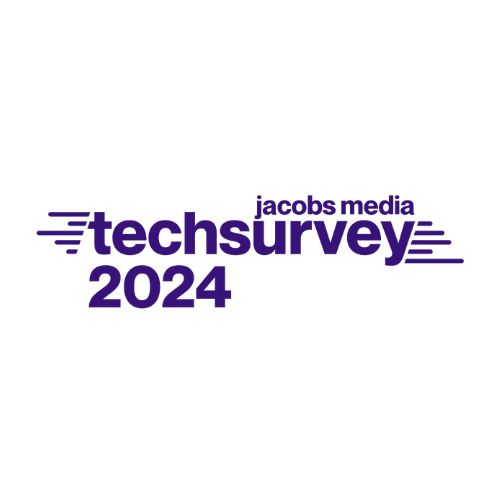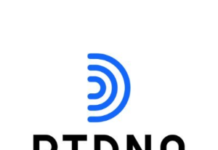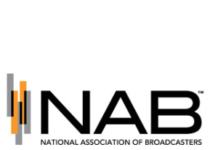
Jacobs Media‘s Techsurvey 2024 results were released on Thursday, offering a look into the state of the radio industry with radio’s most fervent listeners. This year looked, “Pretty, pretty good,” according to Fred Jacobs, with AM/FM making strides in digital evolution while holding fast in its over-the-air bastions.
The survey, conducted from January 9 to February 11, 2024, encompasses responses from 31,413 individuals across 500 commercial radio stations in the U.S. and Canada. This broad swath of data, sourced from station databases, websites, and social media, provides a detailed snapshot of current listener dynamics and behaviors.
Demographic Shifts and Listening Habits
Techsurvey 2024 indicates a slight aging trend among radio listeners, with the average age rising from 54.8 in 2021 to 56.7 in 2024. Women constitute 54% of respondents, with men representing 44%. Notably, the 55-64 age group makes up 35% of the audience, and those 65 and older account for 27%.
Despite these shifts, radio retains its unique appeal, particularly through its local content and connectivity—qualities increasingly valued in the post-Covid era. Key drivers for tuning into AM/FM radio include ease of access in cars (67%), cost-free listening (66%), and engaging hosts and shows (61%).
Conversely, the least appealing aspects of radio include sports (16%), prize giveaways (14%), and on-demand content (13%).
Personalities Over Playlists
The survey notes a significant shift over the years in listener preferences from music to personality-driven content. In 2014, 70% tuned in for music, compared to 57% in 2024, while interest in hosts increased from 57% to 61% over the same period. This shift underscores the growing importance of radio personalities in attracting and retaining listeners, particularly in genres like Hot AC, CHR, and mainstream rock, with sports also ranking high for host value outside of music formats.
Because of this search for connection, there’s a big market for giving away the opportunity to experience a local show, concert, or sporting event with station talent.
Why No Radio?
Approximately 11% of surveyed listeners report a decrease in their radio consumption, citing several key factors influencing their listening habits.
The most significant reason, noted by 53% of those listening less, is the shift towards non-radio music sources, such as streaming platforms. This trend is particularly prevalent among Millennials and Gen Xers. Contrary to expectations, Gen Z is not leading this shift.
Another major factor is lifestyle changes, with 40% of respondents spending less time in vehicles as a lingering effect of COVID lockdowns. Thirdly, 36% of those listening less cite the abundance of commercials as a deterrent.
A Win For AM Radio In-Car
The desire for AM/FM capabilities in new vehicles is on the rise, with Techsurvey 2024 showing 74% of new car buyers prioritize FM radio, a 3% increase year-over-year. This also matches a 3% rise for AM radio as a priority at 35% – this can likely be attributed to the national headlines around the AM For Every Vehicle Act as politicians, advocacy groups, and listeners rally around the band.
AM outpaces Apple CarPlay (29%), HD Radio (25%), and SiriusXM (23%) in desirability.
Bluetooth connectivity remains the most-demanded audio feature by a narrow margin, with 76% favoring the option.
Digital Challenges and Opportunities
While traditional broadcast remains robust, digital consumption of radio content shows signs of plateauing. Ownership of physical radios has declined, with only 74% of households reporting ownership – a historic low. Digital platforms see varied usage: 39% listen in vehicles, 18% stream via computers, and 9% use mobile apps.
The survey highlights a notable rise in streaming, with 38% of AM/FM listening now occurring online, up from 17% in 2014. Mobile app adoption has also increased, with 40% of respondents downloading their favorite station’s app, led by sports format listeners at 59%.
Perceptions vs. Reality in Radio Listening
According to recent data, there exists a notable gap between perception and reality in terms of radio listenership. While Nielsen reports that 82% of Americans listen to AM/FM radio each week, core radio listeners estimate this figure to be significantly lower, at 59%. This underestimation extends to other platforms as well: SiriusXM’s actual listenership stands at 13%, though it is perceived to be at 37%.
Spotify’s real figure is 27%, against a perceived 42%; and podcasts have a real listenership of 35%, slightly less than the perceived 41%.
Skepticism and Fear Toward AI
The integration of AI in broadcasting stirs significant concern among core radio listeners, with 75% expressing apprehension about AI potentially replacing or cloning the voices of popular on-air talent. Additionally, 39% harbor concerns about AI’s role in voicing commercials. This was previously touched on in Fred Jacobs’ presentation at CRS 2024.
Techsurvey 2024 shows that by balancing tradition with innovation, radio continues to thrive in an increasingly fragmented media landscape.










Fred Jacobs is a wonderful advocate for radio. The Tech Survey points out what a lot of our counterparts have said for at least 2 decades, and Tom Kent’s summary is about as close to reality as you can get. We need to focus on things that can be changed to help broadcast radio survive. AM needs plenty of attention-technical and content. Interference rules for AM and FM (including IBOC) need to be enforced rather than ignored. Research needs to be done among the general citizens to see if there’s anything to reverse the trends that Fred and company see annually. Then, action needs to be taken-rather than just discussed. Radio, as an industry, seems to be just like our elected officials who pound their chests, expound the solutions and then go back to their parties while Rome burns. Radio’s about its 3 departments who need to work together more closely than ever. Programming, sales and engineering can only survive with a common goal of entertaining the end user.
It’s kind of like getting a bad book and you’re cherry picking all the good things out of it. I applaud radio Inc. for being radios greatest promoter. All the information you just gave seems right but in my mind, there’s not a lot of good news there as radio continues to slide, and the future in my mind looks bleak for local radio. It’s a combination of all the different digital options and the big companies lack of investment in programming and personalities. When radio shifted the paradigm from programming first to sales first that was the beginning of the end. That’s why all the major companies have gone bankrupt. When you put sales first, sales will elude you. Frank Sinatra said it best. “when I stop caring about my audience. They’ll stop caring about me”